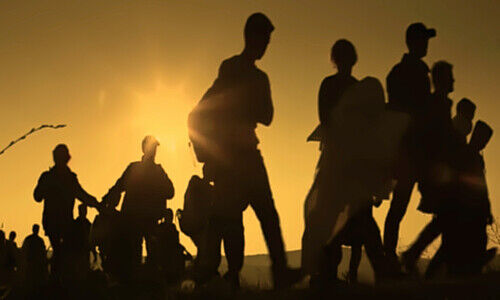Finding the Seychelles in Switzerland
Wachau
The Wachau, a river valley in Lower Austria, is famous for its Baroque monasteries at Melk and Goettweig which don't exist on Lake Biel. Instead of the lazily flowing Danube, in Ligerz and other villages, you look out over the still lake. The landscapes with their gently sloping shores and extensive vineyards amid charming villages are similar.

Who wouldn't want to travel to Wachau: it's so beautiful in Ligerz on Lake Biel. (Image: Swiss-Image, Andreas Gerth)
Dolomites
The Dolomites in the northern Italian regions of Veneto and South Tyrol are a highly weathered mountain group of the limestone Alps. The highest peak is the Marmolata at 3,343 meters. Although they're a thousand meters lower, the Gastlosen in the cantons of Fribourg, Bern, and Vaud look similarly jagged and are therefore touted as the «Saanenlaender Dolomites.»
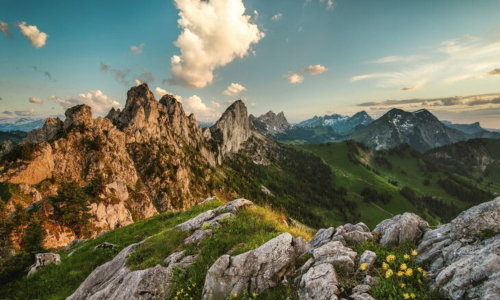
We also have jagged mountains: the Gastlosen in the border region of Fribourg-Berne-Vaud. (Image: Swiss-Image, Martin Maegli)
Lake Baikal
Lake Baikal in Siberia, with an area of just under 32,000 square kilometers, is «only» the seventh largest freshwater lake in the world, but at up to 1,642 meters the deepest and correspondingly calm. Lake Neuchâtel at 218 square kilometers, is the largest lake located entirely in Switzerland, but only a pond compared to Baikal.
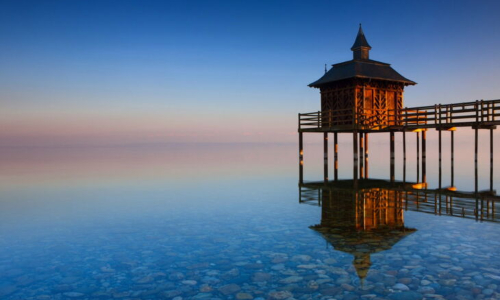
Nevertheless, on quiet evenings, one can experience a similar silence and sublimity on some stretches of beach, for example in Chez-le-Bart, commune of La Grande Béroche NE.
The Swiss alternative to Lake Baikal is Lake Neuchâtel. (Image: Swiss-Image, Andreas Gerth)
Indian Summer
Indian Summer is a dry, warm period in late autumn in certain areas of the US and Canada accompanied by bright blue skies and intense coloration of the deciduous trees.
But you don't need a transatlantic flight to experience Indian Summer. A train ride over the Albula in the Upper Engadine is enough where, especially on the lakes, late autumn is just as beautiful.
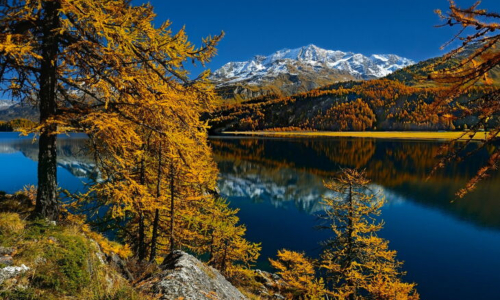
The colorful autumn on the Silvaplanersee. (Image: Swiss-Image, Stefan Gruenig)
Seychelles
On many Seychelles islands, you can find secluded, almost deserted sandy beaches. Pointe de Sable on Lac de Joux in the Vallée de Joux evokes a similar feeling with extensive sandy beaches and few people.
The most important difference between an African island and the Vaud mountains becomes apparent when you test the water temperature with your toes.
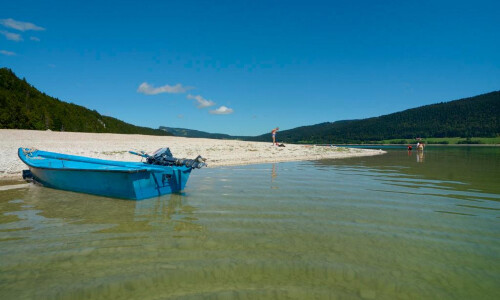
Pointe de Sable on Lac de Joux brings back memories of the Indian Ocean. (Image: myvalledejoux)
Scotland
The Vallée de Joux in the Dent de Vaulion range above Lac de Joux at 1,482 meters, has a barrenness reminiscent of the Scottish Highlands. There is even a whisky distillery in the valley where the Distillerie du Risoux creates the «Isle of Joux» single malt.

A Scottish landscape in western Switzerland, above Lac de Joux. (Image: Swiss-Image, Max Schmid)
Tibet
The yaks are missing and on the hills around the Buddhist monasteries. Otherwise, the Pfynwald in Valais with the free-flowing Rhone and the mountains in the background has more than a few similarities with Tibet.
The biggest difference is the altitude. The Rhone Valley is 500 meters above sea level, while Lhasa, the capital of Tibet, rises to 3,650 meters. The Dufourspitze, the highest point in the Valais Alps at a proud 4,634 meters, is shadowed by mountains in the highlands of Tibet, some over 7,000 meters. Somewhere such comparisons have their limits.
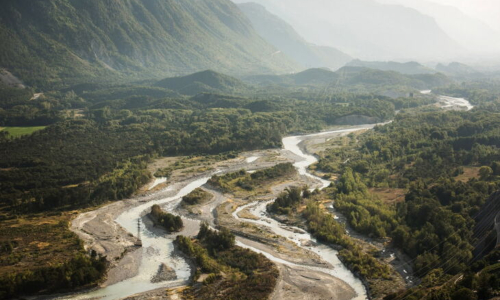
The Pfynwald in Valais has similarities with Tibet. (Image: Swiss-Image, Markus Buehler)
- This article first appeared on the partner website travelnews.ch. Book tip: «A world trip through Switzerland - see, the good is so close» by Artur K. Vogel.
- << Back
- Page 2 of 2














